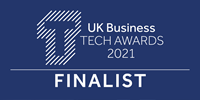Clinical Systems for the Future
I recently thought it was about time I brushed up on my clinical skills so decided to attend the Community Pharmacist Consultation Service (CPCS) CPD course organised by RPS and RCGP. It was a useful refresher taking me back to my early days of practice. Obviously, the principles of taking a patient's history, measuring readings and drawing a diagnosis haven’t changed, but I did learn a bunch of new mnemonics to help remember what to cover off in a consultation. We really do love our mnemonics in pharmacy!
CPCS of course is the service whereby pharmacies receive referrals, perform consultations and are eligible for a fee under the Community Pharmacy Contractual Framework (CPCF). Over recent years this framework has seen a gradual expansion in the range of advanced or essential services. The plans for the future are ambitious and there doesn’t seem to be any slowing down. Recently, PSNC announced a range of new drugs to be added to the New Medicine Service (NMS). Meanwhile new specifications are being drawn up for Hypertension Services, Smoking Cessation, Discharge Medication Services and much more.
As nationally commissioned services increase under the CPCF, locally commissioned services also remain. In addition to this, many progressive pharmacists have established their own clinics to offer a range of private services, often in conjunction with their prescribing role. Whichever way you cut it, clinical services are happening and this is the clear direction of travel for the sector.
Technology Platforms
We would expect the expansion in pharmacy services to be matched with an expansion in technology to perform these new roles. The technologies available to pharmacists thus far typically enable them to manage and record the transactions. Platforms, such as PharmOutcomes and Sonar, have allowed pharmacies to receive referrals, access elements of data via SCR, share data arising from consultations and submit their claims. The driver for functionality has been to ensure pharmacists complete the service requested, are reimbursed correctly and, crucially, commissioners are able to audit the services provided.
Until now the technology to support these clinical services was funded by the DH and procured centrally. However recent funding changes have opened up the service provision to other IT providers to be able to offer CPCS services. The agenda goes further and will soon allow other IT providers to support NMS, DMS, Hypertension, Smoking Cessation and many of the services coming down the line under the national framework.
Whilst the more cynical among us may say they now have to pay for technology that was otherwise being provided free of charge, opening up access to other IT providers can only be a good thing. Pharmacies now have a choice of which system they use to access and manage their services. However it is only good, if it is matched with innovative thinking and a fresh approach to supporting the role.
Defining Moments
In previous articles, I have shared my frustrations with the traditional dispensing workflow which is manual, inefficient and labour intensive. I have often reflected on that defining moment in pharmacy’s history where prescriptions went from paper to electronic. This was an opportune moment when we had the chance to rethink our workflow and change the way we operate. Instead, the opportunity was missed, as PMR companies simply introduced a ‘print’ button on their screens allowing us to generate the paper token and carry on in the dispensary as if nothing happened. Consequently, EPS greatly benefited the NHS, BSA and GPs but did little for community pharmacy. Only now are systems such as Titan helping address this imbalance by digitising the dispensary workflow.
Once again we are witnessing another defining moment in pharmacy’s history. The pharmacy sector has been wanting to play a greater clinical role and the DH is granting the sector that wish (albeit whilst reducing the profit on dispensing but let’s not get into that). It is not inconceivable that half of community pharmacy’s income will eventually come from these clinical services. That’s a lot of time we will be spending on services and a lot of money resting on this.
As the service delivery opens up to new IT system providers, we cannot settle for technology that simply ticks the boxes for the commissioners and helps them manage the transactions and payment of services. If new technology is driven solely by these factors, then we risk ending up being in the same place as we have been in the dispensary. That is, manual, inefficient, labour intensive processes which fall short of what the job demands.
The Vision for Clinical Services Technology
Carrying out a clinical service is more than a “form fill”. It demands a full workflow. Pharmacists will need systems that are able to book appointments, message patients and organise their schedules. The technology needs to support the capturing of detailed patient histories alongside measurements taken during consultations. Where medication is prescribed or supplied, the transaction needs to seamlessly link in with the dispensary. There also needs to be integrated communication tools to message the GP and issue follow up letters to the patient. Above all, every action needs to be coded using interoperable standards (eg SNOMED) that allow patient data to be shared, 2-way, with other multi-disciplinary teams, via SCR.
In short, if pharmacists are to take on some of the roles previously performed by GPs, then pharmacists will need clinical systems that provide the same functionality as GP systems. Anything less will simply be inadequate and risks being yet another missed opportunity that serves commissioners whilst perpetuating inefficiencies in the pharmacy.
So as we brush up on our clinical skills and prepare ourselves for the future that awaits, let’s demand our technology providers up their game, think differently and help lay the foundation for the future. If we don’t get it right first time round, we may not get a second chance.










